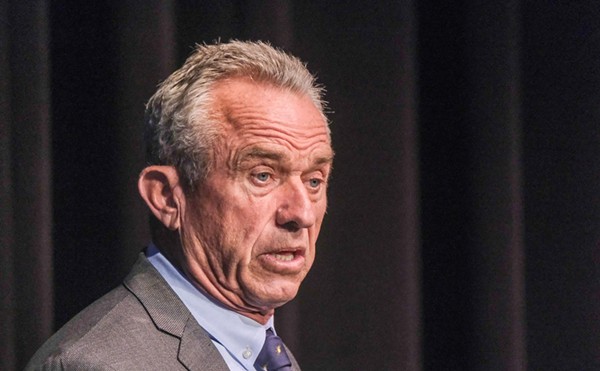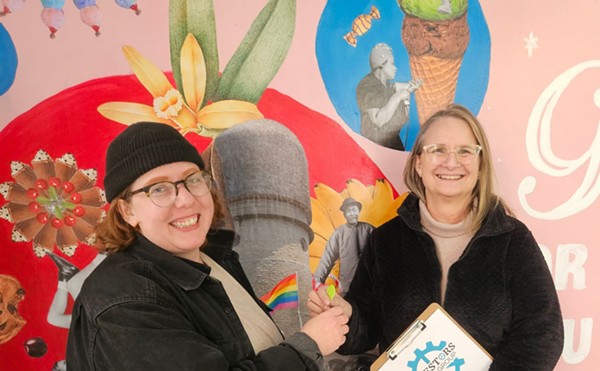That means all of us.
It seems that life itself needs to come labeled with the disclaimer language you find on an investment prospectus: Past results offer no indication of future performance. Of course, nobody listens to that advice. Besides, in the end, what else do we have but hindsight?
Maybe what we need isn't a more accurate set of assumptions but the fortitude to withstand a more accurately vague set of assumptions. Did you know that black serial killers show up in roughly proportional numbers to the general population? Black Americans make up about 12 percent of Americans and an estimated 13 percent to 16 percent of all serial killers, but their biographies are rarely adapted as TV movies of the week. Researchers theorize that since black serial killers generally kill black victims, their crimes fall prey to the overall lack of media coverage for black-on-black violence. (If it doesn't happen to "us" — not literally all of us, but the stereotypical "decent," racially or culturally "white," middle-class "American citizen" who stands in for us — then it doesn't quite register in the news or imprint on our imaginations.) Of course, even an awareness of murder sprees among African-American killers and victims would not have helped us conjure an accurate image of these two equal-opportunity assassins.
Our ignorance and misconceptions are therefore free to rule us. We set out on a feverish chase after white box trucks while the true threat drives right through the Chevy Caprice-sized holes in our profile.
In his column for The New York Times this past Saturday, the ever-vigilant Frank Rich makes an explicit connection between the sniper case — "the second most highly watched news story in a decade, second only to 9/11" — and the recent release of a hair-raising report by the Council on Foreign Relations titled "America Still Unprepared — America Still in Danger." The connection is simple: Whether faced with homegrown malcontents wielding rifles or foreign terrorists wielding package bombs, we (literally all of "us") are vulnerable. The report's authors, Rich writes,
found that the nation's 650,000 local and state police still have no access to federal terrorist watch lists. They found minimal surveillance of the potentially explosive cargo containers transported to and within the U.S. by ship, truck and train. (We seem to be making the unwarranted assumption that Al Qaeda's next attack will again be by plane.) Though President Bush told the nation this month that a single "Iraqi intelligence operative" could with one "small container" wreak havoc with chemical and biological weapons, we are largely defenseless against such an attack: "Police, firefighters and emergency medical personnel in most of the nation's cities and counties are no better prepared to react now than they were prior to September 11."
This report seems to give us exactly what we need: solid information and reasonable assumptions to help keep us safe. If past performance is any indication of future results, however, these findings will be met with complacency, inaction, and a myopic unwillingness to face unpleasant likelihoods and act — as were the CIA's explicit pre-Sept. 11 predictions about a massive al Qaida attack on U.S. soil.
Given that complacency, inaction, and myopia, we may ultimately find ourselves prey to various stereotypes and inaccurate assumptions — for example, the widespread misperception that only some parts of the country are vulnerable. As Rich reports:
Speaking from his home state of Colorado, [report sponsor and retired U.S. Senator] Gary Hart said, "The attitude is that it's not going to happen here." I had asked him if he agreed with my perception that terrorism seems a much less pressing threat when you talk to Americans outside the D.C.-N.Y. axis. "It's an East Coast problem, maybe a West Coast problem," he said, giving his take on the local mood. "And that's tragically mistaken. The next targets could be Denver, Cleveland, Dallas. The way you demonstrate a country's vulnerability is to attack it everywhere."
We've been told that Sept. 11 transformed us into Us, a single nation united by grief and vengeance. More likely, it has merely forced our collective imagination to focus on an ever-moving convoy of white box trucks — sneaker bombs on airlines, suspicious white powder in envelopes, Arab-American medical students on car trips — while we unwittingly wave on through . . . who knows what next.
Sandy Asirvatham writes for City Paper, where the original version of this feature appeared. Send comments to [email protected]





